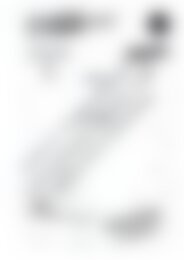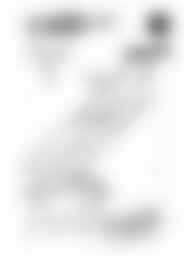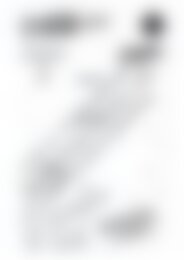You also want an ePaper? Increase the reach of your titles
YUMPU automatically turns print PDFs into web optimized ePapers that Google loves.
Viewing sample
<strong>Number</strong> patterns 4 – <strong>Number</strong> patterns <strong>to</strong> <strong>Algebra</strong><br />
Published by R.I.C. Publications ® 2012<br />
Copyright © Paul Swan 2012<br />
ISBN 978-1-922116-08-6<br />
RIC-6103<br />
Viewing sample<br />
Published by<br />
R.I.C. Publications ® Pty Ltd<br />
PO Box 332, Greenwood<br />
Western Australia 6924<br />
Copyright Notice<br />
No part of this book may be reproduced in any form or by any means, electronic or mechanical, including pho<strong>to</strong>copying or<br />
recording, or by an information retrieval system without written permission from the publisher.
CONTENTS<br />
Graphing Multiples.............................................................................. 4–5<br />
Exchange Rates ................................................................................. 6–7<br />
Marking Multiples................................................................................ 8–9<br />
Diagonal Dilemmas............................................................................... 10<br />
Empty Tables........................................................................................ 11<br />
Multiplication <strong>Patterns</strong>.......................................................................... 12<br />
Multiplication Tables............................................................................. 13<br />
In the Middle......................................................................................... 14<br />
The Boomerang.................................................................................... 15<br />
Robots............................................................................................ 16–17<br />
Even More Robots................................................................................. 18<br />
Blank Robot Grids................................................................................. 19<br />
Circle <strong>Patterns</strong>...................................................................................... 20<br />
Digit Sums............................................................................................ 21<br />
Square the Digits.................................................................................. 22<br />
Paper Folding....................................................................................... 23<br />
Viewing sample<br />
• www.ricpublications.com.au• © R.I.C. Publications ® • <strong>Number</strong> patterns <strong>to</strong> <strong>Algebra</strong> • 3
Graphing Multiples – 1<br />
Ruler<br />
1 2 3 4 5 6 7 8 9 10 1 12 13 14 15 16 17 18 19 20 21 22 23 24 25 26 27 28 29 30<br />
Multiples of two are<br />
2, 4, 6, 8, 10, 12, …<br />
The first multiple is 2,<br />
the second is 4, the third,<br />
6 and so on.<br />
Multiples of two may<br />
be graphed as shown.<br />
1 Mark in the 7th, 8th and 9th multiples<br />
of two on the graph and join the points.<br />
2 Multiples of 3.<br />
a List the first ten multiples of three.<br />
b Graph the first ten multiples of three. Use a<br />
different colour pencil. (Make sure it is sharp.)<br />
c Compare the graph of the multiples of two with<br />
the multiples of three graph. What do you<br />
notice?<br />
3 Multiples of 4.<br />
a Describe what you think the graph of the<br />
multiples of four will look like.<br />
b List the first ten multiples of four.<br />
c Graph the multiples of four. Use a different<br />
colour pencil.<br />
Viewing sample<br />
4 Predict what you think would happen if<br />
you graphed the multiples of five.<br />
Graphs are often a<br />
good way <strong>to</strong> find patterns<br />
and relationships.<br />
4 • <strong>Number</strong> patterns <strong>to</strong> <strong>Algebra</strong> • © R.I.C. Publications ® • www.ricpublications.com.au •
Graphing Multiples – 2<br />
Ruler<br />
1 2 3 4 5 6 7 8 9 10 1 12 13 14 15 16 17 18 19 20 21 22 23 24 25 26 27 28 29 30<br />
1 Multiples of 6.<br />
a Complete this table.<br />
2 Multiples of 7.<br />
a Complete this table.<br />
b Graph these points<br />
on<strong>to</strong> the grid.<br />
3 Which line has the steeper slope?<br />
4 Let me think ...<br />
a What would the graph of the 1 times table<br />
look like?<br />
b Draw the graph <strong>to</strong> check your prediction.<br />
c Were you correct?<br />
b Graph these points<br />
on<strong>to</strong> the grid in a<br />
different colour.<br />
Viewing sample<br />
Yes<br />
No<br />
• www.ricpublications.com.au• © R.I.C. Publications ® • <strong>Number</strong> patterns <strong>to</strong> <strong>Algebra</strong> • 5
Exchange Rates<br />
1 Do this with three other numbers.<br />
a<br />
This is fun!<br />
b What pattern do you see?<br />
2 Further patterns can be found if you use numbers in sequences; for example; 90,<br />
91, 92, 93, 94 etc. There are nine two-digit numbers in the nineties where the<br />
first digit is larger than the second.<br />
a Write them all down, and calculate the difference.<br />
90 91 92 93<br />
- 9 - 19 - 29 - 39<br />
• Choose a two-digit number. The digit for<br />
the tens must be greater than the<br />
number of units: 42<br />
• Reverse the digits: 24<br />
• Subtract them: 42 – 24 = 18<br />
• Divide the answer by 9: 18 ÷ 9 = 2<br />
÷ ÷ ÷<br />
Viewing sample<br />
What<br />
do you<br />
notice<br />
about<br />
the answers?<br />
b<br />
6 • <strong>Number</strong> patterns <strong>to</strong> <strong>Algebra</strong> • © R.I.C. Publications ® • www.ricpublications.com.au •
Exchange Rates (continued)<br />
3 There are only eight two-digit numbers in the eighties where the first digit<br />
is greater than the second.<br />
a Write them all down, and calculate the difference.<br />
b What do you notice?<br />
c Calculate the difference between the first and second digit;<br />
8 - 0 =, 8 - 1 =, 8 - 2 = etc.<br />
What do you notice?<br />
4 Investigate what happens when you work with two-digit numbers in the<br />
seventies, sixties and fifties.<br />
a Write the numbers and calculate the difference between the first and second<br />
digits.<br />
Challenge!Viewing sample<br />
b What do you notice?<br />
• www.ricpublications.com.au• © R.I.C. Publications ® • <strong>Number</strong> patterns <strong>to</strong> <strong>Algebra</strong> • 7
Marking Multiples – 1<br />
1 Multiples of 5.<br />
a Colour all the multiples of five on the grid.<br />
b Describe the pattern that is formed.<br />
1 2 3 4 5 6<br />
7 8 9 10 11 12<br />
13 14 15 16 17 18<br />
2 Multiples of 7.<br />
a Use a different colour and mark all the multiples of seven<br />
on the grid.<br />
b Describe the pattern that is formed.<br />
1 2 3 4 5 6 7 8<br />
9 10 11 12 13 14 15 16<br />
17 18 19 20 21 22 23 24<br />
25 26 27 28 29 30 31 32<br />
33 34 35 36 37 38 39 40<br />
41 42 43 44 45 46 47 48<br />
49 50 51 52 53 54 55 56<br />
57 58 59 60 61 62 63 64<br />
65 66 67 68 69 70 71 72<br />
73 74 75 76 77 78 79 80<br />
4 Can you do this?<br />
a Design a grid that will produce a<br />
diagonal pattern when the<br />
multiples of three and five are<br />
coloured.<br />
You don‛t need <strong>to</strong><br />
use all of the grid.<br />
3 Equally puzzling.<br />
a Which multiples do you think will form a diagonal<br />
pattern on this 1–80 grid?<br />
b Colour these multiples on the grid.<br />
19 20 21 22 23 24<br />
25 26 27 28 29 30<br />
31 32 33 34 35 36<br />
37 38 39 40 41 42<br />
43 44 45 46 47 48<br />
49 50 51 52 53 54<br />
55 56 57 58 59 60<br />
Viewing sample<br />
b Test your grid by marking the<br />
multiples of three and five.<br />
c How wide is your grid?<br />
columns wide<br />
8 • <strong>Number</strong> patterns <strong>to</strong> <strong>Algebra</strong> • © R.I.C. Publications ® • www.ricpublications.com.au •
Marking Multiples – 2<br />
Ruler<br />
1 2 3 4 5 6 7 8 9 10 1 12 13 14 15 16 17 18 19 20 21 22 23 24 25 26 27 28 29 30<br />
1 Multiples of 3.<br />
a Colour all the multiples of three on<strong>to</strong> the 1–60 grid.<br />
b Describe the pattern that is formed.<br />
2 Find multiples.<br />
a Which multiples do you think will produce the same pattern<br />
on the 1–80 grid below?<br />
b Colour these multiples on the 1–80 grid.<br />
3 Multiples of 6.<br />
a List the multiples of six.<br />
b On page 11, design a grid that will produce the same<br />
pattern when the multiples of six are coloured.<br />
c How wide is your grid?<br />
columns wide<br />
4 Multiples of 8.<br />
a Go back <strong>to</strong> your original 1-60 grid and mark in the<br />
multiples of eight using a different colour.<br />
b Which multiples would you need <strong>to</strong> mark on the 1–80<br />
grid <strong>to</strong> produce a similar pattern?<br />
1 – 60 grid<br />
1 2 3 4 5 6<br />
7 8 9 10 11 12<br />
13 14 15 16 17 18<br />
19 20 21 22 23 24<br />
25 26 27 28 29 30<br />
31 32 33 34 35 36<br />
37 38 39 40 41 42<br />
43 44 45 46 47 48<br />
49 50 51 52 53 54<br />
55 56 57 58 59 60<br />
1 – 80 grid<br />
1 2 3 4 5 6 7 8<br />
9 10 11 12 13 14 15 16<br />
17 18 19 20 21 22 23 24<br />
25 26 27 28 29 30 31 32<br />
33 34 35 36 37 38 39 40<br />
41 42 43 44 45 46 47 48<br />
Viewing sample<br />
c List the multiples that you would need <strong>to</strong> colour on<br />
your own grid (page 11), <strong>to</strong> produce a similar pattern.<br />
49 50 51 52 53 54 55 56<br />
57 58 59 60 61 62 63 64<br />
65 66 67 68 69 70 71 72<br />
73 74 75 76 77 78 79 80<br />
• www.ricpublications.com.au• © R.I.C. Publications ® • <strong>Number</strong> patterns <strong>to</strong> <strong>Algebra</strong> • 9
Diagonal Dilemmas<br />
2 More diagonals.<br />
3 Make your own tables.<br />
1 Complete this multiplication table.<br />
a Shade the numbers in the third and<br />
fourth rows.<br />
b Can you see the lines joining numbers in<br />
each row along a diagonal? Find the<br />
differences between the two numbers on<br />
each of the diagonals.<br />
, , , , , , ,<br />
c What do you notice?<br />
a Shade the numbers in the seventh and eighth rows. Mark the diagonals.<br />
b Find the differences between each pair of numbers on the diagonals.<br />
c What do you notice?<br />
a Use an empty table on page 11. Choose two more rows that are next <strong>to</strong> each other<br />
and mark in the diagonals. Write the differences between each pair of numbers<br />
along the diagonals.<br />
b What do you notice?<br />
Challenge!<br />
3 6 9 12 15 18<br />
4 8 12<br />
21<br />
16 20 24 28<br />
2 1<br />
Viewing sample<br />
Use an empty table on page 11<br />
and write down what happens when<br />
you change the direction of the diagonals.<br />
10 • <strong>Number</strong> patterns <strong>to</strong> <strong>Algebra</strong> • © R.I.C. Publications ® • www.ricpublications.com.au •
Empty Tables<br />
a Empty tables for Marking Multiples – 2<br />
b Empty tables for Diagonal Dilemmas<br />
X 1 2 3 4 5 6 7 8 9<br />
1<br />
2<br />
3<br />
4<br />
5<br />
6<br />
7<br />
8<br />
9<br />
X 1 2 3 4 5 6 7 8 9<br />
1<br />
1<br />
2<br />
2<br />
3<br />
3<br />
4<br />
4<br />
5<br />
5<br />
X 1 2 3 4 5 6 7 8 9<br />
1<br />
2<br />
3<br />
4<br />
5<br />
6<br />
7<br />
8<br />
9<br />
X 1 2 3 4 5 6 7 8 9<br />
Viewing sample<br />
6<br />
7<br />
8<br />
9<br />
6<br />
7<br />
8<br />
9<br />
• www.ricpublications.com.au• © R.I.C. Publications ® • <strong>Number</strong> patterns <strong>to</strong> <strong>Algebra</strong> • 11
Multiplication <strong>Patterns</strong><br />
1 Look at the following table.<br />
2 What is happening?<br />
a Draw a 3 x 2 rectangle around six numbers<br />
in the grid.<br />
e.g.<br />
b Multiply the two numbers in the opposite<br />
corners.<br />
x =<br />
x =<br />
c What do you notice?<br />
a Draw more 3 x 2 rectangles in the grids on page 13. Multiply the numbers in the<br />
corners opposite each other.<br />
x = x =<br />
x = x =<br />
b What happens each time?<br />
3 Draw different sized rectangles on the grids and see what happens.<br />
a 4 x 2 rectangles<br />
x = x =<br />
x = x =<br />
b 3 x 3 rectangles<br />
Viewing sample<br />
x = x =<br />
x = x =<br />
4 Think for a moment!<br />
Predict what will<br />
happen if you have<br />
a 4 x 3 rectangle.<br />
Now check and see.<br />
Correct? Yes<br />
No<br />
12 • <strong>Number</strong> patterns <strong>to</strong> <strong>Algebra</strong> • © R.I.C. Publications ® • www.ricpublications.com.au •
Multiplication Tables<br />
X 1 2 3 4 5 6 7 8 9<br />
1 1 2 3 4 5 6 7 8 9<br />
X 1 2 3 4 5 6 7 8 9<br />
1 1 2 3 4 5 6 7 8 9<br />
2 2 4 6 8 10 12 14 16 18<br />
3 3 6 9 12 15 18<br />
4 4 8 12 16 20 24<br />
5<br />
6<br />
7<br />
8<br />
9<br />
5 10 15 20 25 30<br />
6 12 18 24 30 36<br />
7 14 21 28 35 42<br />
8 16 24 32 40 48<br />
9 18 27 36 45 54<br />
21 24 27<br />
28 32 36<br />
35 40 45<br />
42 48 54<br />
49 56 63<br />
56 64 72<br />
63 72 81<br />
X 1 2 3 4 5 6 7 8 9<br />
1 1 2 3 4 5 6 7 8 9<br />
2 2 4 6 8 10 12 14 16 18<br />
3 3 6 9 12 15 18<br />
4 4 8 12 16 20 24<br />
5<br />
6<br />
7<br />
8<br />
9<br />
5 10 15 20 25 30<br />
6 12 18 24 30 36<br />
7 14 21 28 35 42<br />
8 16 24 32 40 48<br />
9 18 27 36 45 54<br />
21 24 27<br />
28 32 36<br />
35 40 45<br />
42 48 54<br />
49 56 63<br />
56 64 72<br />
63 72 81<br />
X 1 2 3 4 5 6 7 8 9<br />
1 1 2 3 4 5 6 7 8 9<br />
2 2 4 6 8 10 12 14 16 18<br />
2 2 4 6 8 10 12 14 16 18<br />
3 3 6 9 12 15 18<br />
4 4 8 12 16 20 24<br />
5<br />
6<br />
7<br />
8<br />
9<br />
5<br />
6<br />
7<br />
8<br />
9<br />
5 10 15 20 25 30<br />
6 12 18 24 30 36<br />
7 14 21 28 35 42<br />
8 16 24 32 40 48<br />
9 18 27 36 45 54<br />
3 3 6 9 12 15 18<br />
4 4 8 12 16 20 24<br />
5 10 15 20 25 30<br />
6 12 18 24 30 36<br />
7 14 21 28 35 42<br />
8 16 24 32 40 48<br />
9 18 27 36 45 54<br />
21 24 27<br />
28 32 36<br />
35 40 45<br />
42 48 54<br />
49 56 63<br />
56 64 72<br />
63 72 81<br />
X 1 2 3 4 5 6 7 8 9<br />
1 1 2 3 4 5 6 7 8 9<br />
2 2 4 6 8 10 12 14 16 18<br />
21 24 27<br />
28 32 36<br />
35 40 45<br />
42 48 54<br />
49 56 63<br />
56 64 72<br />
63 72 81<br />
X 1 2 3 4 5 6 7 8 9<br />
1 1 2 3 4 5 6 7 8 9<br />
Viewing sample<br />
2 2 4 6 8 10 12 14 16 18<br />
3 3 6 9 12 15 18 21 24 27<br />
3 3 6 9 12 15 18 21 24 27<br />
4 4 8 12 16 20 24 28 32 36<br />
4 4 8 12 16 20 24 28 32 36<br />
5 5 10 15 20 25 30 35 40 45<br />
5 5 10 15 20 25 30 35 40 45<br />
6<br />
6 12 18 24 30 36<br />
42 48 54<br />
6<br />
6 12 18 24 30 36<br />
42 48 54<br />
7<br />
7 14 21 28 35 42<br />
49 56 63<br />
7<br />
7 14 21 28 35 42<br />
49 56 63<br />
8<br />
8 16 24 32 40 48<br />
56 64 72<br />
8<br />
8 16 24 32 40 48<br />
56 64 72<br />
9<br />
9 18 27 36 45 54<br />
63 72 81<br />
9<br />
9 18 27 36 45 54<br />
63 72 81<br />
• www.ricpublications.com.au• © R.I.C. Publications ® • <strong>Number</strong> patterns <strong>to</strong> <strong>Algebra</strong> • 13
In the Middle<br />
1 Three times three.<br />
a Step 1:<br />
b Step 2:<br />
2 There is a quicker way <strong>to</strong> find the answer …<br />
Add the nine numbers in the first 3 x 3<br />
block of numbers.<br />
Divide the <strong>to</strong>tal by the number in the middle of the box. ÷ 6 =<br />
c Repeat steps 1 and 2 for the other four 3 x 3 blocks.<br />
d What do you notice?<br />
a Make your own 3 x 3 block.<br />
b Predict what you think the <strong>to</strong>tal<br />
= ÷ 14 =<br />
= ÷ 25 =<br />
= ÷ 16 =<br />
= ÷ 64 =<br />
Viewing sample<br />
of the nine numbers will be.<br />
c Explain how you made your prediction.<br />
Have you found<br />
the shortcut?<br />
=<br />
d Test your prediction.<br />
14 • <strong>Number</strong> patterns <strong>to</strong> <strong>Algebra</strong> • © R.I.C. Publications ® • www.ricpublications.com.au •
The Boomerang<br />
2 Calculate the answers <strong>to</strong> each of the following multiplications.<br />
1 Add the numbers in each of the first<br />
four boomerangs <strong>to</strong>gether.<br />
1 x 1 x 1 = 2 x 2 x 2 = 3 x 3 x 3 = 4 x 4 x 4 =<br />
3 What do you notice about the <strong>to</strong>tal for the first four boomerangs and the first<br />
four cubic numbers?<br />
4 Further boomerangs.<br />
a Predict the sums for the next three boomerangs.<br />
A number which is multiplied by<br />
itself is called a ‘square number‛.<br />
A number which is multiplied by itself<br />
and then multiplied by itself again is<br />
called a ‘cubic number‛.<br />
You can colour<br />
the boomerangs<br />
b Explain how you made your prediction.<br />
different colours<br />
<strong>to</strong> help you.<br />
c Check your predictions by finding <strong>to</strong>tals for the 5th, 6th and 7th<br />
boomerangs.<br />
5 th 6 th 7 th<br />
Viewing sample<br />
5 What do you notice about cubic numbers?<br />
• www.ricpublications.com.au• © R.I.C. Publications ® • <strong>Number</strong> patterns <strong>to</strong> <strong>Algebra</strong> • 15
Robots – 1<br />
1 Toy Robot<br />
A <strong>to</strong>y robot may only be given<br />
two instructions.<br />
• Turn right; and<br />
• Forward steps.<br />
The following instructions were<br />
given <strong>to</strong> a robot.<br />
• Forward one step<br />
• Turn right<br />
• Forward two steps<br />
• Turn right<br />
• Forward four steps<br />
• Turn right<br />
These instructions are repeated<br />
until the robot gets back <strong>to</strong> the<br />
start.<br />
a Draw the robot’s path.<br />
b How many times did you<br />
repeat the pattern?<br />
2 A different pattern<br />
a Follow these instructions <strong>to</strong> show<br />
the robot’s path on the grid.<br />
• Forward four steps<br />
• Turn right<br />
• Forward one step<br />
• Turn right<br />
• Forward two steps<br />
• Turn right<br />
b Continue the pattern until the robot<br />
gets back <strong>to</strong> the start.<br />
c How many times did<br />
you repeat the pattern?<br />
3 What do you notice<br />
about the patterns?<br />
A right turn is<br />
the same as a<br />
quarter turn<br />
or a 90° turn.<br />
Viewing sample<br />
16 • <strong>Number</strong> patterns <strong>to</strong> <strong>Algebra</strong> • © R.I.C. Publications ® • www.ricpublications.com.au •
Robots – 2<br />
1 Draw the robot's path.<br />
a Follow these instructions <strong>to</strong> produce<br />
the robot’s path on the grid.<br />
• Forward two steps<br />
• Turn right<br />
• Forward three steps<br />
• Turn right<br />
• Forward one step<br />
• Turn right<br />
• Repeat four times.<br />
b Where do you finish?<br />
c Describe the pattern.<br />
2 Make one yourself.<br />
a Write your own set of instructions<br />
<strong>to</strong> produce a similar pattern.<br />
• Forward<br />
• Turn right<br />
• Forward<br />
• Turn right<br />
• Forward<br />
• Turn right<br />
Viewing sample<br />
b Try your set of instructions on the<br />
grid <strong>to</strong> check whether your pattern<br />
is similar. Watch where you start!<br />
Write a set of<br />
robot instructions for<br />
a friend <strong>to</strong> draw.<br />
You can use the grids on<br />
page 19.<br />
• www.ricpublications.com.au• © R.I.C. Publications ® • <strong>Number</strong> patterns <strong>to</strong> <strong>Algebra</strong> • 17
Even More Robots<br />
1 Use the blank grids on page 19 <strong>to</strong> draw the paths that<br />
these robots would travel.<br />
a Robot 1<br />
• Forward 2 steps<br />
• Turn right<br />
• Forward 3 steps<br />
• Turn right<br />
• Forward 4 steps<br />
• Turn right<br />
d What do you notice about the paths travelled by the robots?<br />
e What do you notice about the instructions?<br />
2 What happens if you change the order; for example, 3 steps, 2 steps and<br />
then 4 steps? Test what happens when the order is changed.<br />
3 What happens if the robots are instructed <strong>to</strong> walk<br />
2 steps, 3 steps and then 6 steps?<br />
4 A different pattern.<br />
b Robot 2<br />
• Forward 3 steps<br />
• Turn right<br />
• Forward 4 steps<br />
• Turn right<br />
• Forward 2 steps<br />
• Turn right<br />
c Robot 3<br />
• Forward 4 steps<br />
• Turn right<br />
• Forward 2 steps<br />
• Turn right<br />
• Forward 3 steps<br />
• Turn right<br />
a Write your instructions and draw the robot’s walk on the grid on page 19.<br />
b What happens?<br />
a Write your instructions and draw the robot’s walk on the grid on page 19.<br />
b What happens?<br />
a Now try 2 steps, 1 step and 5 steps.<br />
You may have noticed that the<br />
order of the instructions is the<br />
same in each case.<br />
Viewing sample<br />
b What do you notice about the 2, 3, 6 pattern and the 2, 1, 5 pattern?<br />
18 • <strong>Number</strong> patterns <strong>to</strong> <strong>Algebra</strong> • © R.I.C. Publications ® • www.ricpublications.com.au •
Blank Robot Grids<br />
Viewing sample<br />
• www.ricpublications.com.au• © R.I.C. Publications ® • <strong>Number</strong> patterns <strong>to</strong> <strong>Algebra</strong> • 19
Circle <strong>Patterns</strong><br />
1 2 3 4 5 6 7 8 9 10 1 12 13 14 15 16 17 18 19 20 21 22 23 24 25 26 27 28 29 30<br />
1 Connect the dots.<br />
Joining the points according <strong>to</strong> certain rules will produce some interesting patterns.<br />
The first rule is n ➜ 2n which means you will need <strong>to</strong> join each number <strong>to</strong> its double.<br />
e.g. 1 ➜ 2, 2 ➜ 4, 3 ➜ 6 and so on.<br />
The following circle has been<br />
divided in<strong>to</strong> 36 sections. The numbers<br />
closest <strong>to</strong> the circle go from 1–36 in a<br />
clockwise direction. The numbers on the<br />
outside go from 1–36 in an<br />
anticlockwise direction.<br />
Join all the points <strong>to</strong> their double in a clockwise direction using a ruler and sharp pencil<br />
until you reach 18.<br />
Viewing sample<br />
Now starting from 1 and working in an anticlockwise direction, join each point <strong>to</strong> its<br />
double until you reach 18.<br />
The shape you have drawn<br />
is called a 'cardioid'<br />
or heart shape.<br />
Look in your dictionary<br />
for words beginning<br />
with 'cardio'.<br />
What are they<br />
related <strong>to</strong>?<br />
20 • <strong>Number</strong> patterns <strong>to</strong> <strong>Algebra</strong> • © R.I.C. Publications ® • www.ricpublications.com.au •
Digit Sums<br />
1 Calculate the digit sums for these numbers.<br />
Example: 38 ➜ 3 + 8 ➜ 11 ➜ 1 + 1 = 2<br />
a 41 ➜ + =<br />
b 382 ➜ + + ➜ ➜ + =<br />
c 4886 ➜ + + + ➜ ➜ + =<br />
2 Many interesting patterns may be found by looking at the<br />
digit sums found in the tables.<br />
a Calculate the digit sum for the six-times table.<br />
1 x 6 = 6 ➜ 6 ➜ 6<br />
2 x 6 = 12 ➜ 1 + 2 ➜ 3<br />
3 x 6 = ➜<br />
4 x 6 = ➜<br />
5 x 6 = ➜<br />
6 x 6 = ➜<br />
7 x 6 = ➜<br />
8 x 6 = ➜<br />
9 x 6 = ➜<br />
10 x 6 = ➜<br />
Digit Sum<br />
b Write about any patterns you notice.<br />
Every number has a digit sum. The digit sum of 7<br />
is seven. The digit sum of 62 is eight (6 + 2).<br />
The digit sum of 728 is also eight (7 + 2 + 8 = 17, 1 + 7 = 8).<br />
The digit sum of a number is found by adding all the<br />
digits in the number until a single digit is left.<br />
Digit Sum<br />
11 x 6 = ➜<br />
12 x 6 = ➜<br />
13 x 6 = ➜<br />
14 x 6 = ➜<br />
15 x 6 = ➜<br />
16 x 6 = ➜<br />
17 x 6 = ➜<br />
18 x 6 = ➜<br />
Viewing sample<br />
19 x 6 = ➜<br />
20 x 6 = ➜<br />
c Predict the digit sums for the:<br />
21st multiple of six<br />
31st multiple of six<br />
25th multiple of six<br />
35th multiple of six<br />
• www.ricpublications.com.au• © R.I.C. Publications ® • <strong>Number</strong> patterns <strong>to</strong> <strong>Algebra</strong> • 21
Square the Digits<br />
1 Try beginning with a different starting number and see<br />
what happens.<br />
a Choose a two-digit number:<br />
• Choose a two-digit number. e.g. 35<br />
• Square its digits. 3 2 = 3 x 3 or 9<br />
5 2 = 5 x 5 or 25<br />
• Add the two numbers. 9 + 25 = 34<br />
• Now square the digits of this<br />
new number and add them. 3 2 + 4 2<br />
9 + 16 = 25<br />
• Continue the process. 35, 34, 25, 29,<br />
85, 89, 145, 42,<br />
20, 4, 16, 37,<br />
58, 89, 145 ...<br />
You will have noticed that the digits start <strong>to</strong> repeat<br />
themselves.<br />
b Square its digits. x =<br />
x =<br />
c Add the two numbers. + =<br />
d Now square the digits of this new number and add them.<br />
e Continue the process and list all your numbers below.<br />
x =<br />
x =<br />
+ =<br />
, , , , ,<br />
, , , , ,<br />
, , , , ,<br />
Viewing sample<br />
, , , , ,<br />
f Did your numbers start <strong>to</strong> repeat themselves?<br />
When I tried it<br />
I kept going <strong>to</strong><br />
one.<br />
Yes<br />
No<br />
22 • <strong>Number</strong> patterns <strong>to</strong> <strong>Algebra</strong> • © R.I.C. Publications ® • www.ricpublications.com.au •
Paper Folding<br />
1 Fold the paper.<br />
a Start with a sheet of A4 paper. This<br />
sheet represents one rectangle.<br />
d Fold again.<br />
b Fold the paper once across the middle.<br />
You will have created two congruent<br />
rectangles (same size and shape).<br />
c Fold the paper again (lengthways).<br />
2 Collect data.<br />
a Write your data in<strong>to</strong> a table.<br />
e And again.<br />
No of folds No of Rectangles Other expression<br />
0 1<br />
Viewing sample<br />
1 2<br />
2 4 2 2<br />
b What pattern is emerging?<br />
c Predict what would happen if you folded once more.<br />
• www.ricpublications.com.au• © R.I.C. Publications ® • <strong>Number</strong> patterns <strong>to</strong> <strong>Algebra</strong> • 23
Viewing sample

















